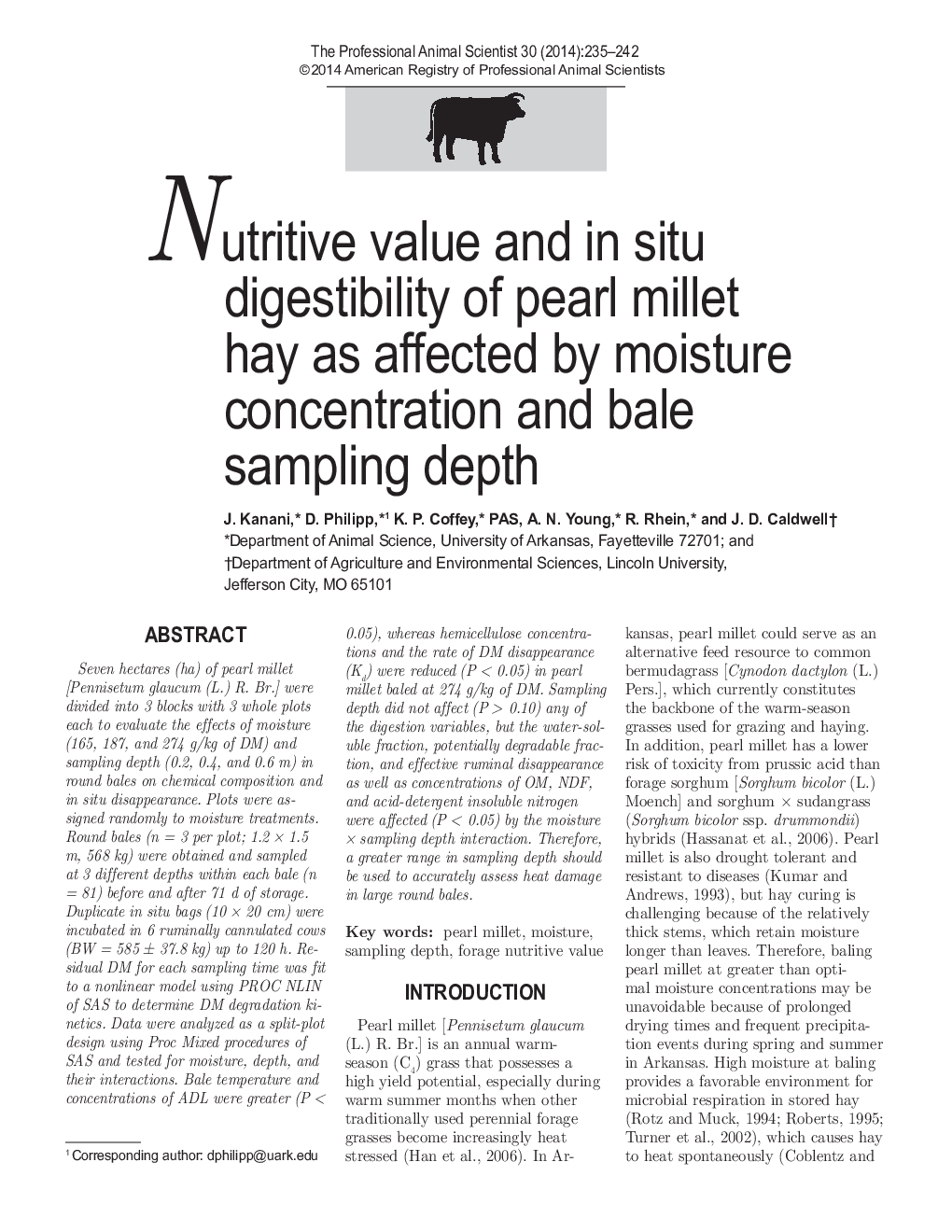| Article ID | Journal | Published Year | Pages | File Type |
|---|---|---|---|---|
| 2453884 | The Professional Animal Scientist | 2014 | 8 Pages |
Abstract
Seven hectares (ha) of pearl millet [Pennisetum glaucum (L.) R. Br.] were divided into 3 blocks with 3 whole plots each to evaluate the effects of moisture (165, 187, and 274 g/kg of DM) and sampling depth (0.2, 0.4, and 0.6 m) in round bales on chemical composition and in situ disappearance. Plots were assigned randomly to moisture treatments. Round bales (n = 3 per plot; 1.2 à 1.5 m, 568 kg) were obtained and sampled at 3 different depths within each bale (n = 81) before and after 71 d of storage. Duplicate in situ bags (10 à 20 cm) were incubated in 6 ruminally cannulated cows (BW = 585 ± 37.8 kg) up to 120 h. Residual DM for each sampling time was fit to a nonlinear model using PROC NLIN of SAS to determine DM degradation kinetics. Data were analyzed as a split-plot design using Proc Mixed procedures of SAS and tested for moisture, depth, and their interactions. Bale temperature and concentrations of ADL were greater (P < 0.05), whereas hemicellulose concentrations and the rate of DM disappearance (Kd) were reduced (P < 0.05) in pearl millet baled at 274 g/kg of DM. Sampling depth did not affect (P > 0.10) any of the digestion variables, but the water-soluble fraction, potentially degradable fraction, and effective ruminal disappearance as well as concentrations of OM, NDF, and acid-detergent insoluble nitrogen were affected (P < 0.05) by the moisture à sampling depth interaction. Therefore, a greater range in sampling depth should be used to accurately assess heat damage in large round bales.
Keywords
Related Topics
Life Sciences
Agricultural and Biological Sciences
Animal Science and Zoology
Authors
J. Kanani, D. Philipp, K.P. PAS, A.N. Young, R. Rhein, J.D. Caldwell,
